Transition Time at Grand Lake – FLW
Category: article
Sep 30th, 2019 by Keith Worrall
Modified Sep 30th, 2019 at 11:53 AM

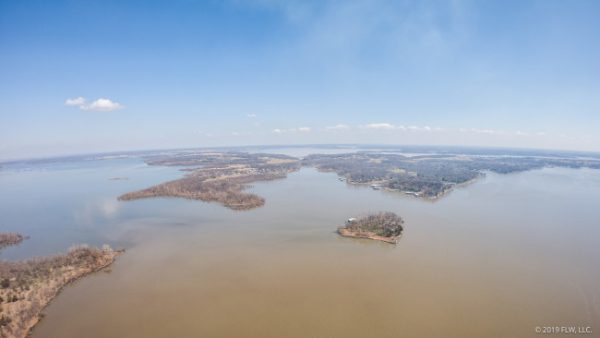
Transition Time at Grand Lake
September 30, 2019 by Justin Onslow
Grand Lake has been flooded for most of the summer, and, as a result, it hasn’t received as much fishing pressure as is typical for one of the premier fisheries in the region. Weights for the Costa FLW Series Southwestern Division finale, presented by T-H Marine, have the potential to be outstanding for this time of year, but it may all come down to what the weather decides to do leading up to the event.
As of the time of publication, Grand Lake is roughly 2 1/2 feet above normal pool. With rain in the forecast, there’s a chance water levels continue to rise, which could serve to add a little more uncertainty to what is already a transitional time for many fisheries in the mid-south. Fish are moving up shallow and chasing bait, but how shallow they get could be largely dependent on the weather.
We checked in with Grove, Okla., pro Sheldon Collings and Norman, Okla., pro Bradley Hallman – both experts on Grand Lake – to get a better feel for what to expect when the Southwestern Division kicks off its final event of the season on October 3.
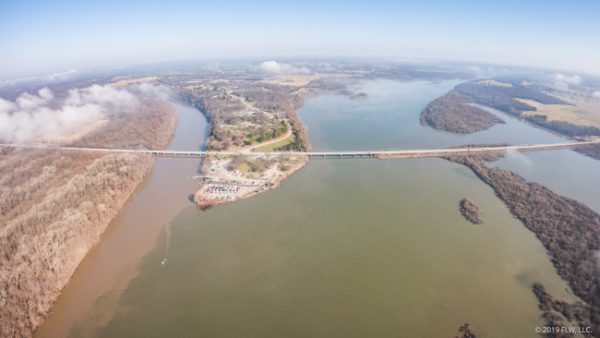
Lay of the water
Grand Lake, in northeast Oklahoma, is the largest impoundment on the Neosho River (also known as Grand River). It’s a 46,500-acre reservoir that is largely influenced by several feeder rivers and creeks, including the Spring River and Elk River.
Various parts of the lake offer varying levels of water clarity, particularly during rainy periods. At the north end, around the Elk River and Wolf Creek, stained water is the norm. Further south, especially down near the Pensacola Dam, clearer water (with 2 to 3 feet of visibility) is more abundant.
While not a true Ozarks fishery – it’s flatter and shallower than some of the more prototypical Ozarks lakes – Grand offers some of the familiar topography of those lakes if you’re looking for it.
Grand is loaded with docks, as well as abundant rock and wood, and high water levels could push transitioning fish even shallower during the tournament, making that shallow cover and structure an even bigger player.
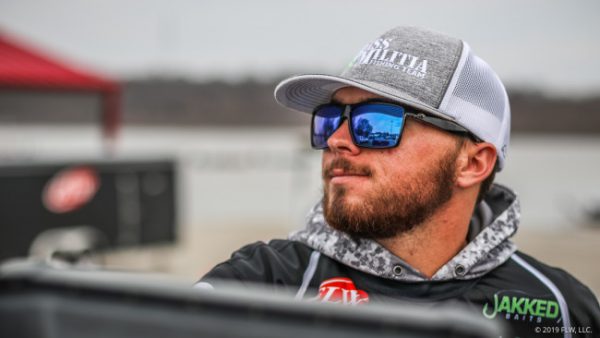
Sheldon Collings
Pregame speculation
“What I’ve figured out is the fish don’t really care what the water temp is,” says Collings, who calls Grand his home lake and currently sits 13th in the Angler of the Year points for the Southwestern Division. “They’re already back in the pockets, or the majority of the fish are, anyways. I think the bigger fish are still in 6 to 12 foot out in front of shallow docks and in shallower piles.”
With the fall transition in full swing, fish are moving back into pockets and creeks chasing bait. They’re getting shallower, and if water levels continue to rise, some of those better fish Collings references might be up on the bank come tournament time.
For that matter, running banks is already producing some numbers, with quality not far off.
“You can pretty much run down the banks with topwater and catch between 10 and 14 pounds, depending on if you get a good one or not,” Collings adds. “It’s not bad. You can flip trees and catch keepers, but there’s a little bit of everything going on right now.”
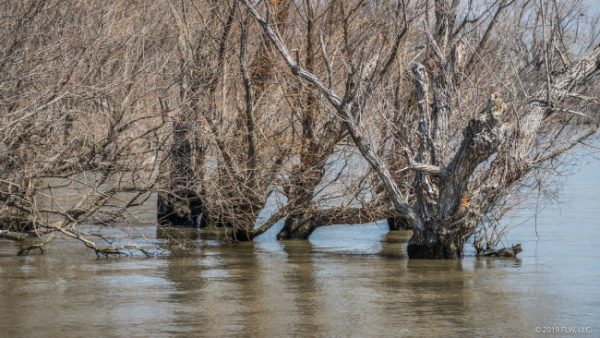
One of the primary factors that will influence bait selection and quality of fish caught up shallow is bait size. Topwaters will definitely be a major player during the tournament, but the specifics are dependent on the situation.
“It really depends on what the size of the bait is in the creek you’re fishing,” Collings explains. “What I’ve noticed is, you get in those creeks that have the real big gizzard shad that are schooled up everywhere out in the middle, it seems like you can go throw a big Whopper Plopper and catch fish on it. If you get into another creek that just has the 3- to 4-inch threadfin shad, they’re wanting more of a walking bait deal.”
Of course, the offshore bite may still be a major player come tournament time, and flipping Grand’s myriad docks is always a staple.
“Right now, you can go flip docks all day and catch 200 fish, but you may only have 12 pounds,” Collings says. “The guys I think who’ll catch the bigger bags will be fishing smaller piles in that 6- to 12-foot range.”
Hallman seems to agree, and he’ll be keeping an eye on how much water – if any – is being pulled during the event. If current is flowing, it could keep some of the transitioning fish from moving up, making the offshore bite a true wildcard to win the tournament.
“It’s hard when the lake level is like that and they’re not pulling that much current,” says Hallman. “It’s come up 2 foot in the last 48 hours. If it comes up another 2 foot, they could open up some dams where we start seeing some current available, and that could make the offshore bite better.
“Whether it’s won on the bank or won offshore, I think it’s 50-50.”
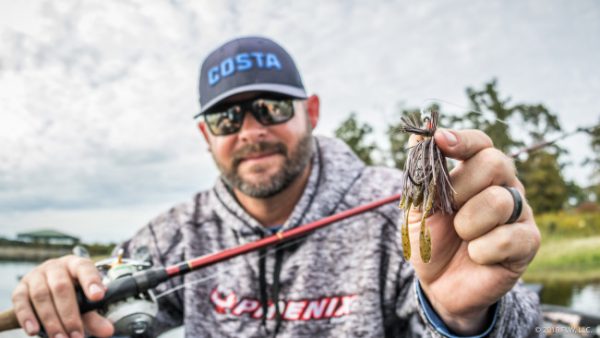
Bradley Hallman
Tournament tactics
There’s no shortage of effective tactics in play on Grand Lake this time of year. From running banks with topwaters, crankbaits and spinnerbaits to flipping docks and flooded trees to targeting offshore structure with jigs and worms, anglers will have a lot of stellar options.
Collings believes the topwater bite is going to be prevalent, though he admits there’s probably going to be a fairly even split between anglers burning the bank, flipping structure and targeting offshore spots.
“I’d be willing to bet someone in the top 10 throws a topwater and never puts it down throughout the whole week,” he opines. “It’ll be a mixture of a lot of things. It’ll be a Pop-R, a Whopper Plopper for sure – there’s been a lot of big fish caught on a Whopper Plopper lately – and then a Spook or any sort of walking bait.
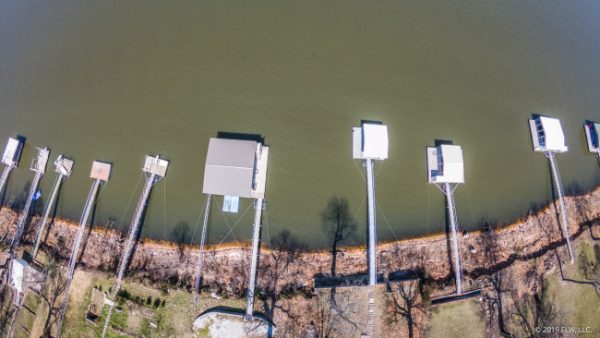
“I think a lot of people will catch fish off the docks. Right now, it’s really hard to go catch 3-pounders off docks. You’ll fish 30 or 40 docks and then catch a 2 3/4-pounder. Unless you get on that right stretch where it’s the right depth where it’s not super deep, it’s not super shallow, it seems like those are the ones that usually produce better fish this time of year on Grand.”
Collings still has hope for the offshore bite, though.
“Personally, I think it’ll be won in that 6 to 12 foot of water on a Biffle Bug, football jig and big worm.”
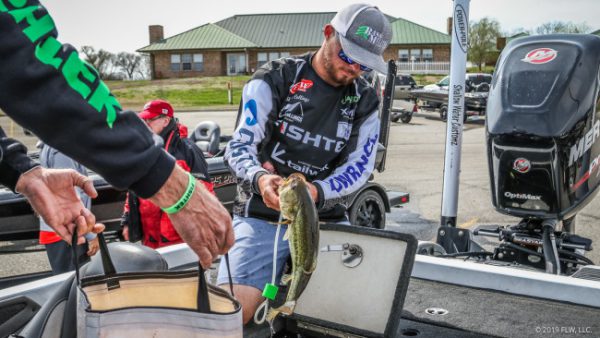
Sheldon Collings
Weight predictions
By all accounts, limited fishing pressure this year has led to some quality bags in recent events on Grand. While it’s unlikely to take anywhere close to 20 pounds per day to win, it’s safe to expect at least a few anglers to crack big bags in the 20-pound range.
Still, finding quality fish for three consecutive days won’t be easy, and it’ll likely take about 15 pounds per day to have a shot at the victory.
“I think to win it, I’m going to say around 46 pounds,” Collings guesses. “About 15 1/2 to 16 pounds a day.
“To make it to the top 10, if you have 14 [pounds] a day, you’ll be right there. It’s all just a matter of catching a 4- or 5- pounder to go along with the 2 1/2-pounders everyone is catching.”
That’s right on par with Hallman’s estimation, too.
“It’ll take at least 30 [pounds] to get into the top 10,” he says.
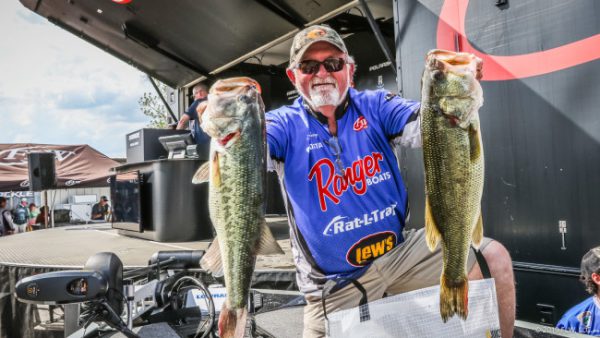
Dicky Newberry
Angler of the Year race
Dicky Newberry just finished his first year on the FLW Tour, but he’s by no means an inexperienced angler. The Houston, Texas pro has 57 top-10 finishes in FLW competition, including one on Grand (a third-place finish in a T-H Marine Bass Fishing League competition in 2014).
Newberry leads the Angler of the Year race in the Southwestern Division with 482 points, after having turned in a top 10 on Sam Rayburn in June. Just behind him with 471 points is San Marcos, Texas pro Charles Whited, who finished top 20 at both Amistad and Rayburn. After that, things get a little tighter.
Just 14 points separate Josh Bensema (third) from Victor Martinez (10th), and packed into that group are FLW Tour pros Todd Castledine (fourth), Andrew Upshaw (fifth) and Hallman (seventh).
Collings, who also fishes the Tour, is in 13th place with 438 points.
The anglers at the top of the list have some margin for error, but maybe not much. If Newberry and Whited stumble, there’s a whole pack of talented anglers within striking distance of the title.
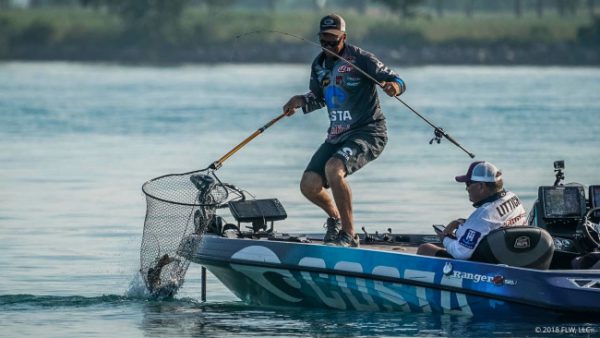
Todd Castledine
AOY Top 10
1. Dicky Newberry – Houston, Texas – 482 points
2. Chris Whited – San Marcos, Texas – 471
3. Josh Bensema – Willis, Texas – 463
4. Todd Castledine – Nacagdoches, Texas – 462
5. Andrew Upshaw – Tulsa, Okla. – 458
6. Tyson Patrick – McCamey, Texas – 453
7. Bradley Hallman – Norman, Okla. – 451
8. Colby Miller – Elmer, La. – 450
9. Justin Morton – Etoile, Texas – 449
10. Victor Martinez – Laredo, Texas – 449
Tournament details
Format: All boaters and co-anglers will compete for two days. The top 10 boaters and co-anglers based on cumulative weight after two days of competition will advance to the third and final round, with the winner in each division determined by the heaviest cumulative three-day weight.
Takeoff Time: 7:30 a.m. CT
Takeoff Location: Wolf Creek Park, 963 N 16th Street, Grove, Okla.
Weigh-In Time: 3:30 p.m. CT
Weigh-In Location: Wolf Creek Park